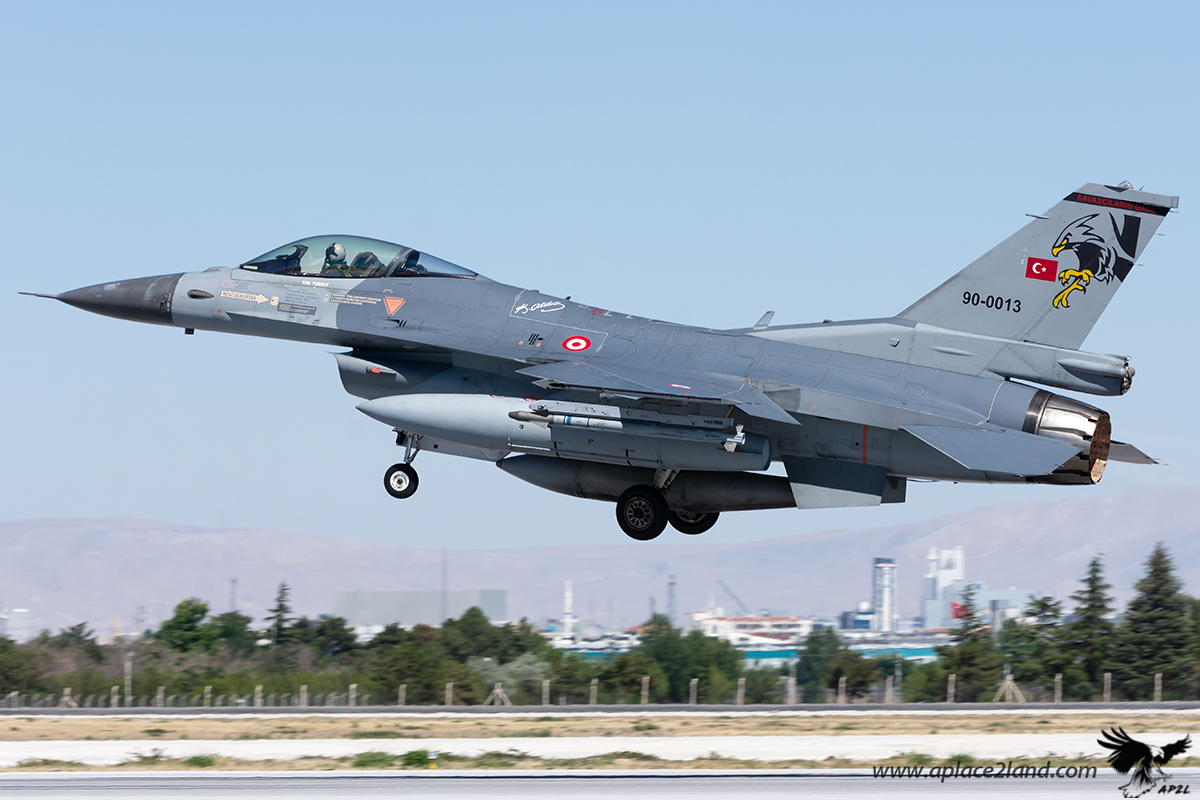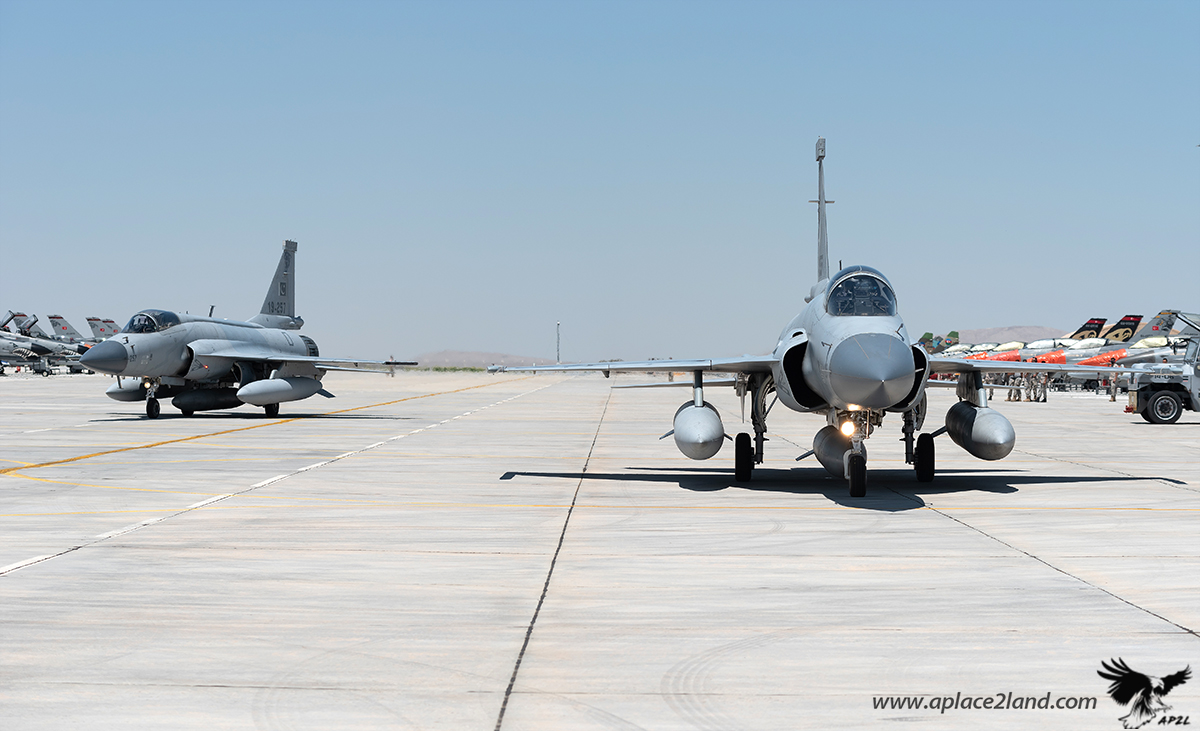Introduction
The Turkish Air Force (THK) hosted another Media Day in Konya for the second time in less than a month, reopening the doors of its 3rd Main Jet Base at Konya. This time the occasion was the International Anatolian Eagle 2021 (the previous was the Anatolian Phoenix CSAR exercise last May), after the 2020 edition was cancelled due to the COVID-19 pandemic.

Over the years the Anatolian Eagle has become one of the most important exercises of this type in Europe.


Since its establishment in 2001 up to 15 countries, more than 33000 personnel and 2000 air assets participated at 43 Anatolian Eagle editions for a total of around 24000 sorties flown.

Participants
Held between June 21 and July 02, Anatolian Eagle 2021-1 has seen – in addition to the usual and numerous presence of the Turkish hosts – the participation of Qatar, Azerbaijan and Pakistan Air Forces. Apart from the Turks, no Air Forces from NATO countries were present with their own aircraft, with the only exception being represented by the single NATO E-3A AWACS.

Impressive was the number of nations who participate as observers at Anatolian Eagle 2021: Bangladesh, Belarus, Bulgaria, Burkina Faso, Georgia, Iraq, Sweden, Kosovo, Lebanon, Hungary, Malaysia, Nigeria, Romania, Tunisia, Ukraine, Oman, Jordan, and Japan.

Azerbaijan Air Force participated at AE for the first time with fighter jets, sending a pair of MiG-29s from Sumqayit/Nasosnaya AB and two Su-25s from Kürdəmir AB.



After their debut at Anatolian Eagle two years ago, the Pakistan Air Force’s JF-17s Thunder were present in Konya again this year with five aircraft from 16 squadron “Black Panthers” based at Minhas/Kamra AB.

Qatar Emiri Air Force attended the drills with four of its brand new Rafales DQ/EQ from 1st Fighter Wing, Tamim AB. This marked the absolute debut of the Qatari’s Rafale in an international exercise outside the national borders. However, those French-made fighters could become a usual presence at Konya air base. In fact, during the AE 2021 news leaked that Turkish military chief General Yasar Guler signed a technical agreement with his Qatari counterpart, which allows Doha to receive aerial training in Turkey for the next five years with the possibility of a one-year extension.

If the Turkish parliament will sign the deal into law, Qatar will be able to permanently deploy up to 250 militaries and 36 aircraft (including Rafales and Mirage 2000s fighter jet, C-17s and C-130s cargo aircraft and AW-139s and AH-64s Apaches helicopters) on Turkish soil, with the large base of Konya as the most likely destination, due the presence of the Anatolian Eagle Training Center (AETC) and the large air spaces available for training.

The large Turkish contingent was made by 30 F-16C/D from 113 Filo, 151 Filo, 152 Filo, 181 Filo and 191 Filo which took part as Blue force along with some support aircraft, including one KC-135R tanker from 101 Filo, one UAV ANKA-S of the 302 Filo. A single E-7T AEW&C of the 131 Filo provided the battlefield situational awareness (along with the single NATO E-3A Sentry).

In addition, Turkish Air Force also acted as Red Air with surface-to-air assets along with 8 more F-16C/Ds belonging to the 132 Filo. Those aggressors were easily recognized due to the flashy red stickers applied on the tail and on the tailplanes.

A welcome surprise during the Media Day of Anatolian Eagle 2021 was the arrival of two F-4E-2020 Phantoms from the 111 Filo “Panter”. Not appearing among the participants, the two planes (both special tail) took part in an afternoon mission the following day, before returning directly to their homebase in Eskisehir.




Finally, Turkish Naval Forces were present with 2 Frigates and 2 Fast Attack Crafts.
The exercise
The imaginary training scenario of Anatolian Eagle 2021 has been created with the division of a large portion of central Turkey into two nations: Blue (democratic, with a strong military power and ally with world-leading countries) opposed to a Red one (a poor country but with a good military power and growing as regional power, governed by militaries after a coup).

Under the control of AE operation centre, within the most realistic operational war environment, the blue forces conducted Combined Air Operations (COMAO), SEAD/DEAD, air superiority, CAP (Combat Air Patrol), CAS (Close Air Support) and CSAR (Combat SAR) operations against targets located within red land heavily defended by different types of threat: from advanced SAM systems to 4-4,5 gen. combat aircraft simulating aggressor tactics.

The objectives of the Anatolian Eagle 2021 are to prepare pilots and air defence personnel by working in an operational scenario that is as realistic as possible, developing joined and combined operational procedures decreasing the attritions to a minimum level, increasing mission effectiveness giving the opportunity to the fighter pilots to execute their planned tactics to employ in large aerial packages.
Last but not least, by training the participants as they fight and teach them how to survive, the exercise is a useful forum to exchange ideas and lessons learned.

The Anatolian Eagle 2021 also served to the Turkish Air Force and NATO to supervise and evaluated the combat readiness and interoperability of 6 F-16s, 1 KC-135R tanker aircraft, and 6 Stinger Air Defense Teams committed to the Very High Readiness Joint Task Force (VJTF) as part of NATO Response Force (NRF) in order to carried out the related certification.

Acknowledgment
The Author would like to thank the Turkish Air Force, the Lt Col. T. Tumer from AETC, the Lt.Col. Serdar Turk, the Air Attache of Turkey in Rome, and the PAO, Capt. Emrah Akbay and CMsgt Tevfik Cimen for their help and great organization.
